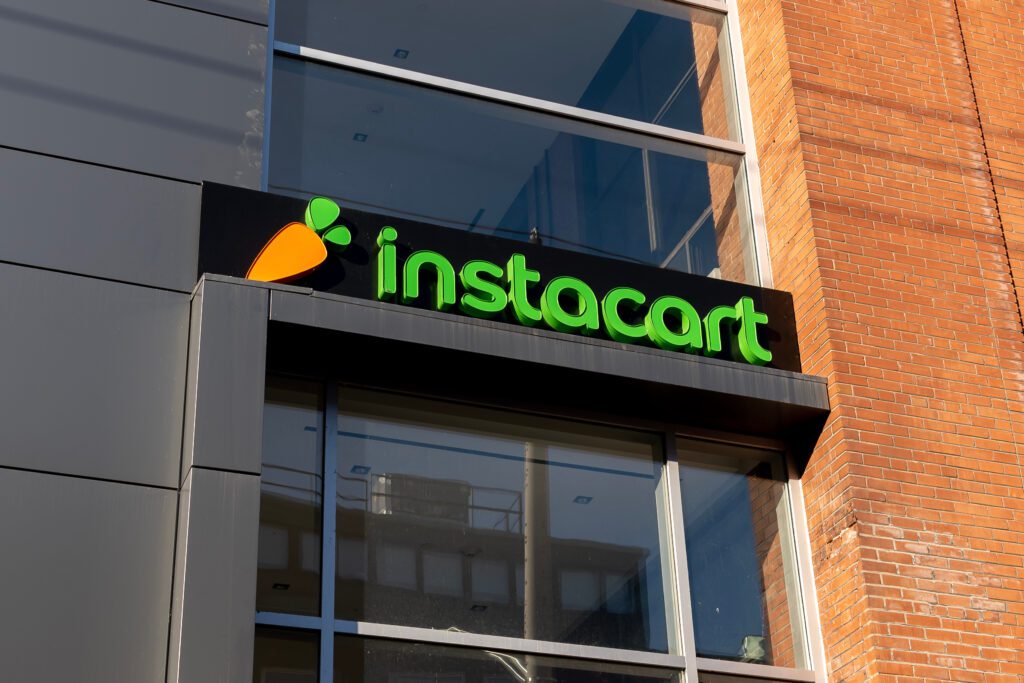Lack of in-stock visibility or incorrect information can introduce problems for delivery apps like Instacart. Out-of-stock messages can mean bad outcomes for consumers and retailers alike, because consumers may not get what they want and retailers may lose opportunities to make sales.
Instacart is attempting to avoid these unwanted substitutions and lost sales with new features it is calling Store View and Second Store Check.
How Instacart will display in-stock statuses for inventory
“Our goal is to make substitutions unnecessary in the first place,” wrote Daniel Danker, chief product officer for Instacart in an explanation on the company’s website.
Danker is no stranger to the fast delivery ecosystem, having spent almost three years at Uber Eats prior to joining Instacart.
Instacart’s new features, Store View and Second Store Check, both attempt to provide real-time data about what is — and isn’t — on store shelves.
“Each customer order updates our view of what’s in a store, and what’s not, one item at a time,” Danker noted, adding that Instacart’s network of approximately 600,000 shoppers already collect over 10 million data points daily as they pick orders, identify out-of-stocks, and make substitutions.
“When we combine all of this information, Instacart can form a more accurate, real-time understanding of what’s happening in a grocery store, so you get the ingredients you need when you want them,” Danker says.
Why in-stock statuses are important
Marshal Davis, an commerce expert and founder of digital agency Ascendly Marketing, told Digital Commerce 360 that for brands, making products visible across multiple stores on Instacart means they won’t lose a sale just because one shelf ran empty.
“Instacart basically turns every nearby store into a backup option, so if one location is out, another can fulfill the order,” Davis explained, adding that this approach boosts sales for both the brand and the retailer.
“And it gives suppliers real-time data on what’s selling out — which helps improve inventory planning and strengthens their partnership with Instacart,” Davis stated.
Of course, happy consumers have B2B implications also, because a satisfied sale reverberates across the entire ecosystem.
“As a shopper, it’s a relief to know Instacart can find my item at another store if my first choice is out; it feels like having a personal grocery assistant who won’t take ‘out-of-stock’ for an answer,” Davis said.
He added that now the customer will still be able to get the exact product they wanted, even if it is sourced from a different store nearby.
Role inventory visibility in conversion
The new Instacart features dovetail with findings from Digital Commerce 360’s annual Omnichannel Report which captures data about how online retailers adapt to customers’ preferences.
For instance, 2024 survey results from Digital Commerce 360 reporting on consumer shopping behavior showed that 62% checked online for product availability in a store. At the end of the day, availability for those shoppers can mean successful conversion.
“We’re continuing to deepen our investments in AI, computer vision, and real-time data capabilities to provide unprecedented insights into what’s happening on store shelves, improving inventory accuracy,” Danker told Digital Commerce 360. “Ultimately, this work enables us to deliver on our most fundamental promise: ensuring customers get exactly what they need, when they need it, through Instacart.”
Do you rank in our databases?
Submit your data and we’ll see where you fit in our next ranking update.
Sign up
Stay on top of the latest developments in the online retail industry. Sign up for a complimentary subscription to Digital Commerce 360 Retail News. Follow us on LinkedIn, X (formerly Twitter), Facebook and YouTube. Be the first to know when Digital Commerce 360 publishes news content.
Favorite